Showing Spotlights 153 - 160 of 544 in category All (newest first):
 Researchers have demonstrated a novel approach toward smart orthodontics based on near-infrared red light from a mechanically flexible LED powered by flexible bio-safe batteries all integrated in a single 3D-printed dental brace. Integration of electronic devices in 3D printed dental aligners is a pragmatic approach towards implementing a flexible electronic technology in personalized advanced healthcare, particularly in orthodontics. Key to this smart brace is the use of a high-performance flexible solid-state microbattery.
Researchers have demonstrated a novel approach toward smart orthodontics based on near-infrared red light from a mechanically flexible LED powered by flexible bio-safe batteries all integrated in a single 3D-printed dental brace. Integration of electronic devices in 3D printed dental aligners is a pragmatic approach towards implementing a flexible electronic technology in personalized advanced healthcare, particularly in orthodontics. Key to this smart brace is the use of a high-performance flexible solid-state microbattery.
Nov 16th, 2017
 The remarkable properties of some natural materials have motivated many researchers to synthesize biomimetic nanocomposites and other nanostructured materials that attempt to reproduce Nature's achievements. Recent research has indicated that the amplification of natural materials' mechanical properties far beyond those of the components that comprise them originates mainly from: 1) a hierarchical micro-/nanoscale architecture and 2) abundant effective interface interactions. A new progress report provides insight into the development of bio-inspired structural materials.
The remarkable properties of some natural materials have motivated many researchers to synthesize biomimetic nanocomposites and other nanostructured materials that attempt to reproduce Nature's achievements. Recent research has indicated that the amplification of natural materials' mechanical properties far beyond those of the components that comprise them originates mainly from: 1) a hierarchical micro-/nanoscale architecture and 2) abundant effective interface interactions. A new progress report provides insight into the development of bio-inspired structural materials.
Nov 10th, 2017
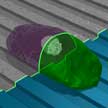 The crucial roles of the physicochemical properties of cell culture substrates on function and behavior of a wide range of the cells are becoming well-studied in the current literature, using experimental approaches. However, development of in silico approaches for prediction of cell responses to the physicochemical properties of substrates is still in its infancy. In new work, an international team of researchers has developed a unifying computational framework to create a multi-component virtual cell model to probe cell function/behavior in silico.
The crucial roles of the physicochemical properties of cell culture substrates on function and behavior of a wide range of the cells are becoming well-studied in the current literature, using experimental approaches. However, development of in silico approaches for prediction of cell responses to the physicochemical properties of substrates is still in its infancy. In new work, an international team of researchers has developed a unifying computational framework to create a multi-component virtual cell model to probe cell function/behavior in silico.
Nov 1st, 2017
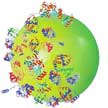 Researchers explore cellular uptake, endocytic pathways, and intracellular dynamics of nanoparticles in HeLa cells, both in absence and presence of biomolecular corona from human plasma. They find that the biomolecular corona could act as a personalized 'endogenous trigger' affecting off-target interactions and controlling the indication for disease of clinically approved formulations. Mechanistic investigations of the biomolecular corona could contribute to a better understanding of the poor success of targeted liposomal technology.
Researchers explore cellular uptake, endocytic pathways, and intracellular dynamics of nanoparticles in HeLa cells, both in absence and presence of biomolecular corona from human plasma. They find that the biomolecular corona could act as a personalized 'endogenous trigger' affecting off-target interactions and controlling the indication for disease of clinically approved formulations. Mechanistic investigations of the biomolecular corona could contribute to a better understanding of the poor success of targeted liposomal technology.
Oct 23rd, 2017
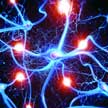 Notwithstanding the progress neuroscientists have made in understanding the microscale function of single neurons and the macroscale activity of the human brain - a comprehensive understanding of the brain still remains an elusive goal. Here we review the basic concepts associated with neuroscience and the current journey of nanotechnology towards the study of neuron function by addressing various concerns on the significant role of nanomaterials in neuroscience and by describing the future applications of this emerging technology.
Notwithstanding the progress neuroscientists have made in understanding the microscale function of single neurons and the macroscale activity of the human brain - a comprehensive understanding of the brain still remains an elusive goal. Here we review the basic concepts associated with neuroscience and the current journey of nanotechnology towards the study of neuron function by addressing various concerns on the significant role of nanomaterials in neuroscience and by describing the future applications of this emerging technology.
Oct 18th, 2017
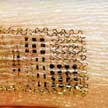 Nanotechnology materials are going to open new realms of possibility for flexible and stretchable monitoring gadgets that are wearable directly on the skin. Here we look at the latest developments in a class of electronic devices, commonly referred to as electronic skin, epidermal electronics, or electronic tattoos, from the materials, devices, and medical applications perspectives. While such devices can also be used for prosthetics and rehabilitation, optogenetics, and human-machine interfaces, this review focuses on the properties of the materials that enable skin-mounted sensors for use as diagnostic tools in the medical field.
Nanotechnology materials are going to open new realms of possibility for flexible and stretchable monitoring gadgets that are wearable directly on the skin. Here we look at the latest developments in a class of electronic devices, commonly referred to as electronic skin, epidermal electronics, or electronic tattoos, from the materials, devices, and medical applications perspectives. While such devices can also be used for prosthetics and rehabilitation, optogenetics, and human-machine interfaces, this review focuses on the properties of the materials that enable skin-mounted sensors for use as diagnostic tools in the medical field.
Sep 26th, 2017
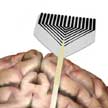 In order to fully exploit the potential of neural interfaces, the forthcoming generation of devices is expected to simultaneously offer multiple functionalities, including recording and stimulation of electrical activity, recognition of neurotransmitters, neuromodulators and other neurologically relevant biomolecules, as well as the capability for controlled drug delivery. Graphene and other 2D materials possess an array of properties (flexibility, electrical mobility, large surface area available for interaction with the neuronal components and amenable to surface modifications) that can enable enhanced functional capabilities for neural interfaces.
In order to fully exploit the potential of neural interfaces, the forthcoming generation of devices is expected to simultaneously offer multiple functionalities, including recording and stimulation of electrical activity, recognition of neurotransmitters, neuromodulators and other neurologically relevant biomolecules, as well as the capability for controlled drug delivery. Graphene and other 2D materials possess an array of properties (flexibility, electrical mobility, large surface area available for interaction with the neuronal components and amenable to surface modifications) that can enable enhanced functional capabilities for neural interfaces.
Sep 22nd, 2017
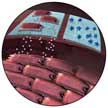 Nanostructured systems have the potential to revolutionize both preventive and therapeutic approaches for treating cardiovascular disease. Given the unique physical and chemical properties of nanostructured systems, nanoscience and nanotechnology have recently demonstrated the potential to overcome many of the limitations of cardiovascular medicine through the development of new pharmaceuticals, imaging reagents and modalities, and biomedical devices. A recent review offers an outline of critical issues and emerging developments in cardiac nanotechnology.
Nanostructured systems have the potential to revolutionize both preventive and therapeutic approaches for treating cardiovascular disease. Given the unique physical and chemical properties of nanostructured systems, nanoscience and nanotechnology have recently demonstrated the potential to overcome many of the limitations of cardiovascular medicine through the development of new pharmaceuticals, imaging reagents and modalities, and biomedical devices. A recent review offers an outline of critical issues and emerging developments in cardiac nanotechnology.
Sep 14th, 2017
 Researchers have demonstrated a novel approach toward smart orthodontics based on near-infrared red light from a mechanically flexible LED powered by flexible bio-safe batteries all integrated in a single 3D-printed dental brace. Integration of electronic devices in 3D printed dental aligners is a pragmatic approach towards implementing a flexible electronic technology in personalized advanced healthcare, particularly in orthodontics. Key to this smart brace is the use of a high-performance flexible solid-state microbattery.
Researchers have demonstrated a novel approach toward smart orthodontics based on near-infrared red light from a mechanically flexible LED powered by flexible bio-safe batteries all integrated in a single 3D-printed dental brace. Integration of electronic devices in 3D printed dental aligners is a pragmatic approach towards implementing a flexible electronic technology in personalized advanced healthcare, particularly in orthodontics. Key to this smart brace is the use of a high-performance flexible solid-state microbattery.
 Subscribe to our Nanotechnology Spotlight feed
Subscribe to our Nanotechnology Spotlight feed





